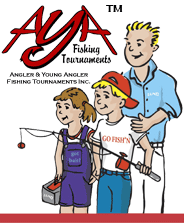Future of Tournaments From The Tournament Organizer Perspective
Nov 7th, 2009 by OutdoorsFIRST
Modified Nov 7th, 2009 at 12:00 AM
Walleye First Article
Future of Tournaments
Tournament Organizer’s Perspective
By Jim Kalkofen
Walleye Tournament Directors Optimistic & Moving Forward in 2010
Walleye tournament directors have plans drawn for their 2010 events. Despite the economy, and maybe because of it, some adjustments have been made in programs, travel considerations, entry fees and dates. The 40-year tradition of fishing against buddies or with the elite professional anglers will continue.
This first in a series examining the state of the walleye tournament world focuses on the events themselves. Tournaments will be held across North America. Tournament directors are encouraged to weigh in with their information on the Walleye First Forum. Future stories may review more tournament organizations.
Traditional and long-running tournaments like the Merc National and the Otter Street tournaments usually fill their Lake Winnebago 300-boat limits in a day or two. Mercury Marine is committed to their customers, and Michelle Kilburn, tournament director said, “This event and tournaments are a passion and a lifestyle, and people will find money for the things they believe in.” She said anglers will compete in their huge community affair (60,000 fans attend Walleye Weekend every year), and other stand-alone events, state circuits, regional and national team and pro-am tours.
 |
|
|
Mercury Marine National Walleye Tournament
|
Up the lake from Mercury’s hometown of Fond du Lac, WI, the Father’s Day weekend sees another decades-old tradition, the Otter Street tournament in Oshkosh, WI. Bill McAloon, retired Otter Street president and past tournament director said they’ve fielded 300 teams since the early 1990’s. “We’ve had to turn teams away, including my son one year for not getting his entry in on time. I don’t expect any problem filling again in 2010,” he said.
McAloon said the tournament is like a reunion, and families, including many father/daughter and father/son teams return annually. It’s the club’s biggest money maker, with donations going to fund fisheries projects like the Eureka Dam, building a long public fishing dock, improving launch site lights and docks, contributing to the many reef projects on the lake, paying for critical habitat rip rap, providing the DNR with a shocking boat — total conservation contributions of $650,000 since the club started.
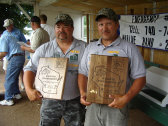 |
|
|
Otter Street Photo |
Team tournaments represent more than 90 percent of all walleye events. The MWC enters its 26th season with three divisions of three tournaments each. Director Jeff Ahlstrand said they lowered their entry fee to $650, from $800 last year. The MWC has been working with their Advisory Panel to select the best sites, increase incentives for signing up early with $1,000 in Cabela’s gift cards to the top three “early-bird” teams at every tournament.
Ahlstrand said last year, with the economy, teams waited until the last minute to sign-up, and when they didn’t see the numbers of teams at a level they felt would offer a reasonable payback, they didn’t enter. “It was a self-fulfilling prophecy. That’s why we want teams to enter early,” he said. The MWC offers numerous contingency bonus programs from Cabela’s and other sponsors, has implemented a bracketed system for early-birds, giving them another way to make the Championship. “These measures should buoy participation, especially since the MWC went from more than 160 teams in 2007 and 2008 to 82 teams in the central division last year,” he said. “I think we’ll pick up some FLW League teams, and even though people are finding other areas to fill their competitive edge, I hope to see more of them back on board.”
 |
|
|
Masters Walleye Circuit
|
The FLW Walleye Tour, despite significant changes according to tournament director Sonny Reynolds remains, “Upbeat about the future. We’re looking at the positive side, and not all the doom and gloom.” For 2010, FLW lowered their pro entry fee to $750, half the rate of last year. Co-anglers will pay $250. Tournaments have been shortened to three days, from four in the past. The FLW split their customary 4-tournament circuit into two divisions of three tournaments each.
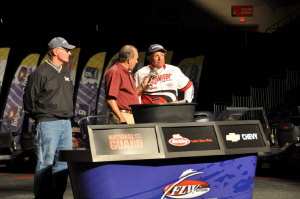 |
|
|
2009 FLW Championship WalleyeFIRST Photo
|
“The marine, fishing and water sports industries are really suffering, maybe more than other businesses. We need to keep the patient alive before he gets better, and that’s what we did,” Reynolds said. “Competitive anglers will deal with these changes. They need to support the industry where they can; if they don’t the sport may go away.” He advised anglers to do the same as the FLW tour, “Do what you have to do to keep going.”
The FLW League was discontinued.
The newest walleye circuit, and one with the most talked-about format, AIM, will be back with their popular Catch-Record-Release program. This pro-am event kicked off in the tough times. Scott Matheson, president and CEO, said, “We have the people on board and in boats. They showed their grit to accomplish goals, and AIM is moving ahead as the only high-stakes pro circuit.” His vision is the industry. “The FLW is a good platform, so is the MWC and the other team events. Tournaments are no different than other businesses – it won’t be easy. With special people and new ideas, AIM will make it,” he said.
After the inaugural campaign, Matheson said it was magical how AIM grew and came to life as the apprehension about CRR evaporated. In fact, it surprised him how many national and international organizations including state fisheries personnel wanted more information. “The reaction from communities, fans, local anglers, property owners in calls, letters and emails was a constant voice of approval for CRR,” he said.
 |
|
|
Anglers Insight Marketing
|
Under the current economic situation, he urged all tournament groups to cross lines and build alliances, and all entities must work together (even rivals and competitors) to maintain the sport of competitive angling. “We need to build heroes, create mentors, stimulate people into going fishing and purchasing tackle, showcase the resources. This may be the most critical time in history to fish competitively,” Matheson said.
Tom “Doc” Johnson lives in Denver, and fished the PWT for 18 years. For the past couple seasons he concentrated on regional promotions and tournaments, competing in the MWC western division and the Wyoming Walleye Circuit. He said with a Lund/Mercury, he would not qualify for FLW contingencies, and wanted to see how AIM worked out. “Fishing close to home meant less travel and expenses. I worked with a teammate, and had fun. I still handle pro staff duties for several companies, and was able to work that into the mix,” he said.
He will consider some AIM events, but will continue to fish the WWC, which will run three tournaments and a Championship in 2010, from a total of six tournaments last year. He reminded other competitive anglers seeking sponsorship, “Fishing gives credibility, but each person needs to sell product for their sponsors, or the support money will dry up.” He urged anglers to knock on doors outside the fishing industry. “Don’t be bashful about working with local stores to help sell the merchandise of your sponsors. You will also educate the store personnel.”
The Midwest Walleye Series started 10 years ago with 40 boats. It has grown to an average of 100 boats at four Wisconsin tournaments, and the numbers continue to increase. The largest field was 160 boats. Director Jim Coon said, “I’m pleased with the support. Teams don’t have to travel far or take time off work to check out a lake prior to the one-day Sunday competitions.” In 2010, the circuit will fish the upper lakes of the Winnebago system, another Winnebago event with all the waters open, two Green Bay tournaments and a Championship.
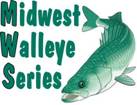 |
|
|
|
The MWS has not lost a sponsor since they started, and work closely with Ranger and Mercury. The only sponsor not on their signage is one that Coon dropped for lack of contract fulfillment. “I won’t allow any competitive sponsors,” he said. He and his family manage the tournaments, and also are involved with two AYA tournaments and do registrations and computer operations for the Merc National. “From what I’m hearing, I expect to pick up a few more teams in 2010,” he said. Entry fee is $275 per team with a no-entry fee Championship to the top 25 points teams.
Another successful team operation just across the Mississippi River is the Minnesota Tournament Trail. Owner Mike Holt said, “When they say ‘Good Luck’ in the morning, they mean it. The MTT is more like a family, and with 1,250 teams participating in an extensive array of events in 2009, it’s a bigger family each season.
Holt said their first year, 2002, saw an average of 41 teams competing. This increased to 60 in 2005; 75 in 2007 and 80 teams in 2009. “The Mille Lacs tournaments are maxxing out at 100 teams,” he said.
Down less than three percent in 2009, Holt said, “Guys are finding time to fish. They may sacrifice a practice day or two, or maybe run to fewer spots or even cut back on the throttle, but they’re coming out.” The MTT includes 14 one-day events and two two-day events (paid out separately each day like two tournaments). To qualify for the Championship, teams must fish five one day and one of the two-day tournaments. He said, “They can pick and choose what fits their family and work schedules, and still make the Championship. I don’t see any participation declines in 2010.”
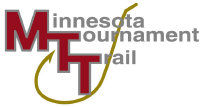 |
|
|
|
Skeeter has been on board for four years. “This helps them sell boats,” Holt said. The Championship winner tows home a $35,000 Skeeter/Yamaha boat. Contestants driving Skeeters qualify for contingency money, also. Tournaments occur on the Mississippi, Big Stone, Mille Lacs, Lake Winnibigoshish, and Lake of the Woods.
The Full Throttle Outdoors walleye series started in 2007 with six tournaments, three in Minnesota and three in Wisconsin. In 2010, they will offer three in Wisconsin, nine in Minnesota, six each in North and South Dakota and three in Illinois, for a total of 27 events. In three years, membership jumped from 100 to 550, and Full Throttle also conducts 40 bass tournaments.
Entry fees are $200 per team with a complimentary dinner at the rules meeting, and a Saturday tournament. “More than 40 teams fished on average in 2009,” Mark Schutz, director said. The Championship is an invitational to the top 20 teams from each of the state circuits. He said, “We have expanded significantly and when a team enters one tournament, they come back for more.”
In addition to professionally run tournaments, FTO provides an inspirational Christian speaker at the dinner, and Schutz said, “Some of our success is due to being a Christian organization, but we want people of all faiths or even those who don’t attend church to join us.” He said growth to as many as 800 members could occur in 2010, because people will commit to fish and win with their families present. “We’re family friendly,” he said. FTO works closely with main sponsors Ranger, Mercury, North Star Imaging and new this year, MinnKota and Humminbird. Contingencies include the Cabela’s NTC qualification and Ranger Cup. “Ministry types of tournaments reach people in a relaxed atmosphere and changes in lives are being made,” Schutz said.
|
||||
Another type of tournament keeps people involved weekly. An example is the Hairy Minnow Fishing League, an 11 boat group that fishes every Wednesday night and some Saturdays in the Brainerd, MN area. Started in 1995, fishing all season from 6 p.m. to 9 p.m. Wednesdays, these friends share information, and compete for bragging rights, according to Wayne Zitzow, local competitor for years. “Some might say we’re not too serious, but when competing for bragging rights, don’t kid yourself,” he said. The League fishes new lakes, does no pre-fishing, and in addition to walleyes, add bass and pike to the mix. There are at least six similar-sized Leagues in the Brainerd area and Leagues for walleyes throughout the Midwest. The Hairy Minnow League releases all fish after measuring them. They score by points, two for 14 to 19 inch walleyes and four points for those that exceed 19 inches. “Its fun and we get out, and we’ve got a waiting list of people who want to join,” he said.
One of the fastest growing tournaments is the Angler Young Angler program implemented by Lund Boats in 1998. “The objective has been to introduce the sport to the next generation,” Michelle Trudeau, Lund marketing said. An adult fishes with two youngsters age 17 and under. Entry fee is $150 per boat. The events have expanded throughout North America, and 26 AYA events were held in 2009. That number will grow to 30 in 2010 with a Championship. AYA will fish the Northwest Territories, Alberta, Saskatchewan, Ontario, Quebec, South Dakota, North Dakota, Minnesota, Iowa, Wisconsin, Illinois and Kentucky.
In 2009, 20 of the 26 events were sold out with a maximum of 40 teams. Trudeau said AYA was forced to expand to 50 teams in a couple situations. “We want families to enjoy the entire competitive fishing experience.” Two examples prove AYA is working. The Loughler brothers fished four years with their father in the Saskatchewan AYA events. When they were 16 and 17, they won the Saskatchewan Walleye Trail, and cited AYA as the reason for their skills and passion. The youngest Lund pro staffer is Coel Forsythe from Kenora. At 13, he’s fished three AYA events in 2008 and 2009, and made Championships both years. “He is a great ambassador for the sport,” Trudeau said.
The Montana Governor’s Cup participation mirrors the water levels. Held on massive Fort Peck Reservoir, the system has been so low the past half dozen years that the marinas were dry. The water rose more than 15 feet since last year, according to Brandy Johnson from the Glasgow Chamber. “That and the hatchery stocking program and the great fishing are really making news,” she said.
In its first year, 1988, there were 130 teams entered for the Friday and Saturday tournament. From 1998 to 2002, it filled with 200 teams. The numbers dropped to 175, 147 and 111 from 2003 to 2005. The lowest point coincided with the lowest water levels in 2006, when only 60 teams entered. By 2008, the numbers were headed in the positive direction and in 2009, a total of 97 teams entered. “I expect to be well above 100 teams in 2010,” Johnson said.
The Friday night fish fry serves 2,000 people, and brings families from throughout the region to town. “Marketing an event like the Governor’s Cup means telling the story that the water is up, and convincing people to come back and try it,” she said. Entry is $400 per team, lowered from $500. “We’re getting calls from guys who haven’t fished in several years.”
Those wanting to compete have more opportunities than ever. Whether at the top level or fishing close to home and cherry-picking favorite events, every walleye angler can fill the competitive urge in 2010. Supporting the tournaments and participating will help all concerned move through this transitional period.
